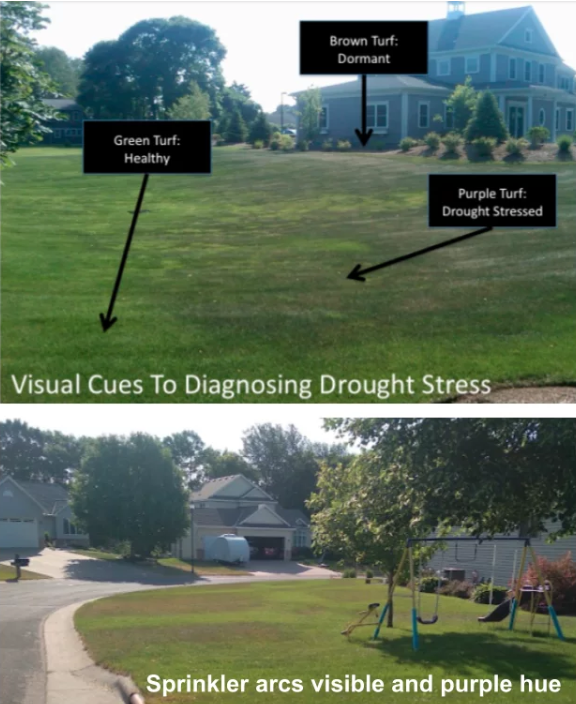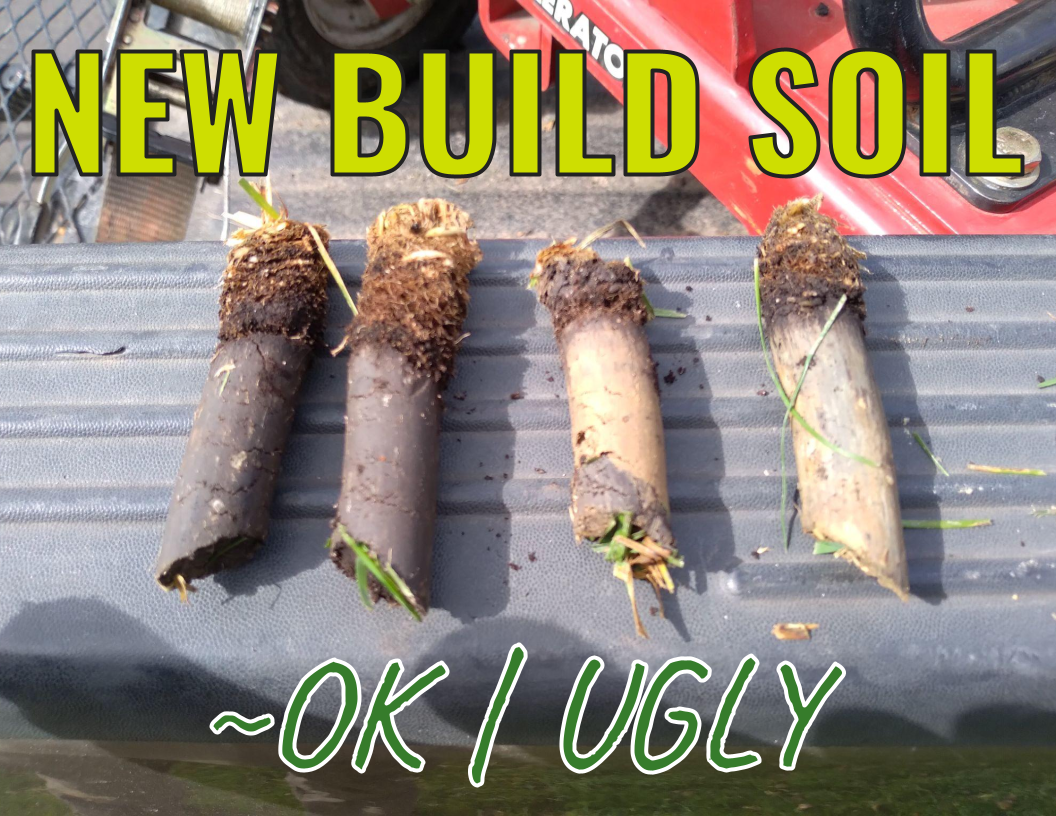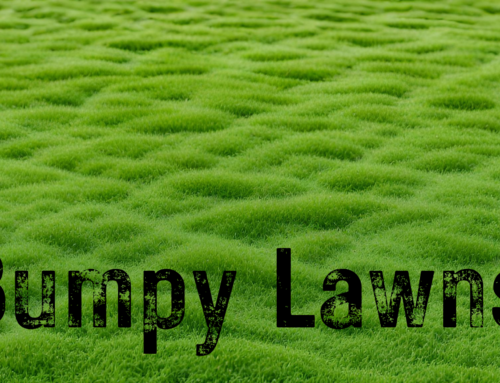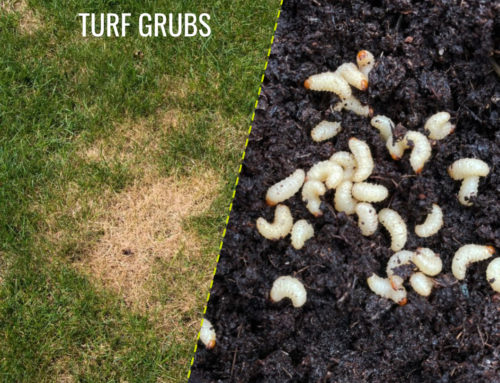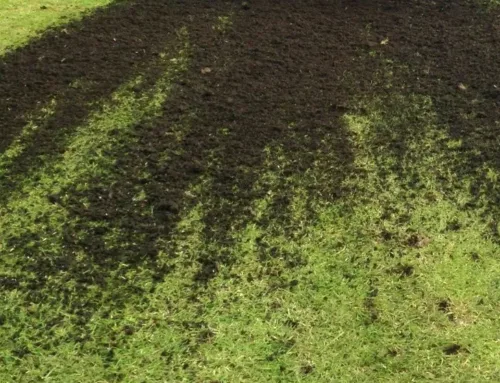One of our most addressed issues… and a personal erk for me
(Matt Rohman)
New construction always has bad issues with soil
Why?
Houses cannot be built on black dirt. It is too soft for the foundation and it is also too soft for the heavy equipment and construction crews to work on – they would get stuck and filthily.
What happens?
The first thing builders do is scrape all the good black dirt and topsoil off the build site and haul it away. They want to work on the that solid clay underneath instead of getting their equipment stuck. The builder will say they “save” the black dirt and “put it back” for the lawn. In hundreds of circumstances, I’ve never found that to be the case. That premium black dirt is sold. The builder then will dig the deep clay out for the basement and use that to “re-level” the lawn area. Then they end up laying sod right on top of the clay with no black dirt underneath. That’s actually best case scenario. We see sod laid on top of all the construction debris from the cement work on the properties’ house and from the other houses in the neighborhood especially if one of the latter houses built in the neighborhood.
But the city requires X inches of black dirt?!?
Here’s where my erk get multiplied. The picture below are cores from an aeration I did myself on a new build. Can you see the difference??? The builder threw some black dirt down (no-where near the amount required) in the front lawn. The city inspector (if there was one) saw that the front lawn appeared to be black dirt and kept driving right on by… “Looks like the builder put black dirt down”. So while there appeared to be black dirt applied (left cores are from the front yard), the back yard had zero black dirt applied since the drive-by inspection doesn’t see the back yard or measure required depth. The cores on the right are from the back lawn. This lawn was struggling at about year two…
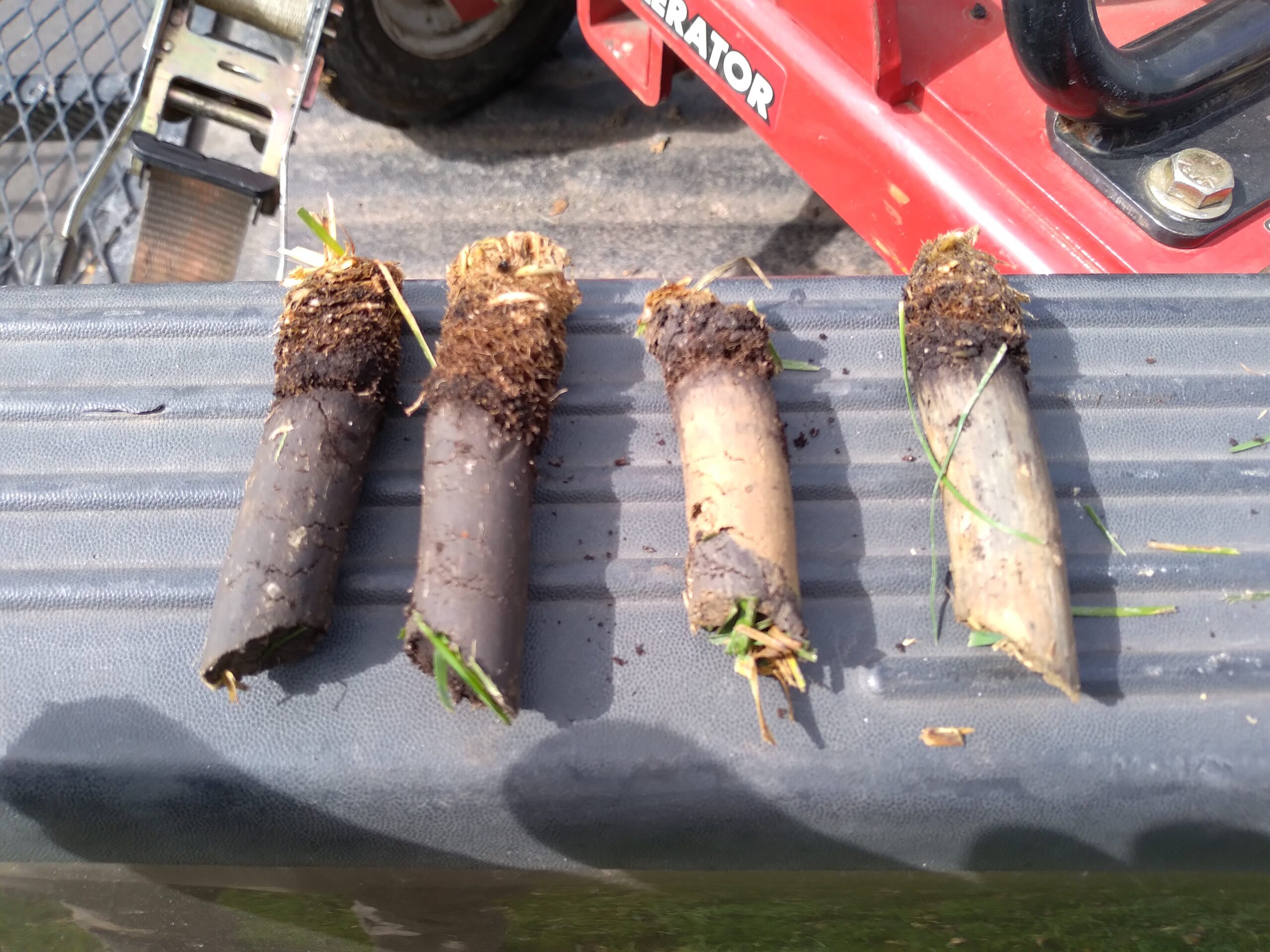
But the grass was fine???
Sod comes from the sod farms pumped so full of nutrients that it would look fine laid on gravel for at least a year (which it ironically usually basically is); long enough to get through their warranty and to blame the fertilizer company. The builders will get away with the scam and save thousands by not having to put the black dirt back. By the time anyone knows, they can blame everyone else; fertilizer company, irrigation company, etc.
How can you tell?
We’re unfortunately so experienced with this that we can we know exactly what’s going on with a quick glace. Below are actually a couple pictures clients have sent in asking what’s going on…

Diagnosis:
- The perfectly green loop around the tree is due to the much better quality of the soil that came in the “root ball” of the tree when it was planted.
- The neighbor has the exact same issue in the new build community.
- In the middle of the picture are some green spots with unique patches in the middle. Those are likely drain tile, gutter drain and/or sump pump outlets. It’s very green right around those areas because they’re getting enough or “over” watered to support the poor soil and root conditions.
When we presented our opinion to the client on this scenario and offered to do soil samples the response was:
“There is no point in doing core samples. I know exactly what the contractor/landscaper did and it did not include any black dirt. It is just sod over clay. We asked for black dirt and were willing to pay extra, but they outright refused!”
Diagnosis:
- Nice and green under around the planted trees due to the pure black dirt root ball that the trees came with.
- There is a sprinkler head right in the middle of the picture evident by the perfect four foot circle of green healthy grass. The sprinkle head either is the lowest one so at the end of the sprinkle cycles, the excess water in the pipes drains there, or that sprinkler isn’t functioning properly and just spraying ‘enough’ water in a 4′ arch. My bet is the former.
- The grass that gets afternoon shade from the house and relief from the sun is perfect! See the shadows aligned with the grass quality?
- Grass goes “purple” right before going dormant due to heat/drought. The grass in-between the pine tree and sprinkler head and on either side of the yellow dormant grass is that purple. It’s going dry.
- The overall diagnosis is the grass isn’t getting enough water for the poor clay new build soil and the heat/sun exposure it’s getting. Special watering instructions are below…
When presented with this diagnosis, the client responded with:
“Thank you so much. That might be the best response I have ever gotten to an inquiry like this, I really appreciate it! So much so that I forwarded it to all my neighbors as an example of good customer service and hopefully get you all some more business in the area.”
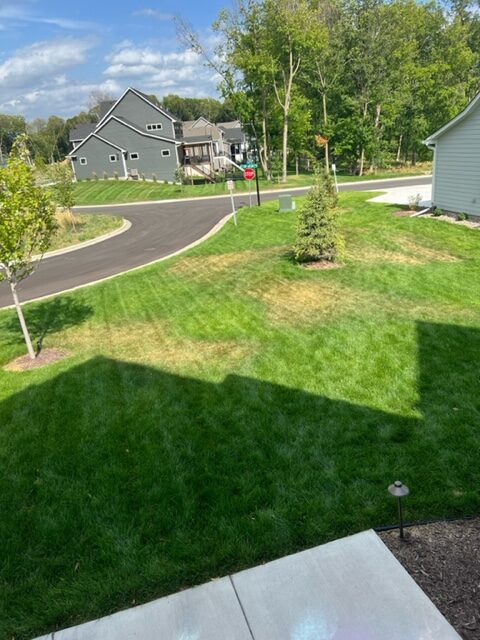
What can be done about it?
What should be done is a class action lawsuit against builders and Maple Grove/Plymouth because every lawn around you will either fail or require an very environmentally non-conscious amount of water to barely survive due to not having the legal requirement of black dirt.
The slightly less dramatic option is to demand your builder fix your lawn. Dig it up down the legal amount, lay real black dirt, and re-sod. Okay… end of Erk.
The much more practical solution is to try to improve your soil: Mechanical aeration to break up the clay and soil improvement applications to biologically convert the clay to something that can hold nutrients and grow roots and also add organic matter.
What can be done – Irrigation/Watering :
Decent rain and/or lots of irrigation may maintain it… for a while. It will be a process to get it to a more self-sustaining status.
If there is one specific area with a 4′ green circle (improperly functioning head), I’d have your irrigation company come and check the performance. If they know what they’re doing they will run the zone for the full 20 min to ensure it’s not just functioning for 15 seconds until the pressure in the lines is used up and the head isn’t able to put out as much. You can also check the zone with tuna cans or cups. If that head and zone are working correctly, you’ll have to run that zone one more time at the end of your regular cycle to compensate for the soil and the sun exposure on that hill. Don’t just increase time; after 20 min most soil is saturated and the water runs off; that’s especially true with clay soils and on hills. Run that zone first in your cycle if you can, then all the others, then that zone again at the end. This is called “cycle and soak”. Run the cycle, let it soak in to avoid the over-saturation runoff, then run it again.
Watch for dry grass and catch it:
That grass isn’t a “super deep green” due to ProLawns fertilizer. When it is so dark that it is looking purple, that is the stage right before going dormant and brown. That grass needs water. This stage is preceded by a stretch without rainfall and accelerated by high temperatures and/or windy conditions that suck the moisture out of the turf and soil.
